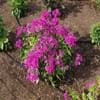Life Span
Perennial
Perennial
Type
Flowering Plants, Fruits, Trees
Vegetable
Origin
Anatolia, Asia, Europe, Iran, Maghreb, Morocco, Norway, The Hiamalayas
Hybrid origin, Mexico, Central America, South America
Types
Flowering Cherries, Sour Cherries, Sand Cherries, Sweet Cherries, Capulin Cherries
Not Available
Number of Varieties
Not Available
Habitat
Forest edges, Wild, Woods
Coastal Regions
USDA Hardiness Zone
4-8
11-15
Sunset Zone
4, 5, 6, 7, 15, 16, 17
A1, A2, A3, H1, H2, 1a, 1b, 2a, 2b, 3a, 3b, 4, 5, 6, 7, 8, 9, 10, 11, 12, 13, 14, 15, 16, 17, 18, 19, 20, 21, 22, 23, 24
Habit
Upright/Erect
Upright/Erect
Flower Color
White
Yellow
Flower Color Modifier
Not Available
Bicolor
Leaf Color in Spring
Dark Green
Green, Dark Green
Leaf Color in Summer
Orange
Green, Dark Green
Leaf Color in Fall
Orange
Green, Dark Green
Leaf Color in Winter
Orange
Green, Dark Green
Plant Season
Spring, Summer
Spring, Summer, Fall
Sunlight
Full Sun, Partial shade
Full Sun
Type of Soil
Loamy, Well drained
Loam, Sand
The pH of Soil
Slightly Acidic
Neutral
Soil Drainage
Average
Well drained
Bloom Time
Early Spring, Spring
Indeterminate
Tolerances
Heat And Humidity, Not Available
Drought
Where to Plant?
Ground
Container, Ground
How to Plant?
Grafting, Seedlings, Transplanting
Grafting, Seedlings
Plant Maintenance
Medium
Medium
Watering Requirements
Never Over-water, Over-watering can cause leaf problems or root diseases, Prefer drip-irrigation instead of Over-head watering, Water twice a day in the initial period
Needs more water during establishment
In Summer
Lots of watering
Lots of watering
In Spring
Moderate
Moderate
In Winter
Average Water
Average Water
Soil pH
Slightly Acidic
Neutral
Soil Type
Loamy, Well drained
Loam, Sand
Soil Drainage Capacity
Average
Well drained
Sun Exposure
Full Sun, Partial shade
Full Sun
Pruning
Don't prune in the fall, Prune if you want to improve plant shape, Prune in late winter, Remove dead or diseased plant parts, Remove deadheads
Pinch or prune as they grow to promote branching and bushiness
Fertilizers
All-Purpose Liquid Fertilizer
14-14-14 Fertilizer, Compost
Pests and Diseases
Aphids, Bacterial Canker, Black Knot, Brown Rot, Caterpillars
Anthracnose, Aphids, Red blotch, Rust
Plant Tolerance
Drought
Heat Tolerance, Salt and Soil Compaction
Flower Petal Number
Not Available
Single
Fragrant Bark/Stem
No
Yes
Foliage Texture
Not Available
Medium
Foliage Sheen
Not Available
Matte
Attracts
Birds
Aphids, Not Available, Squirrels
Allergy
Swelling in the face
Stomach pain, Vomiting
Aesthetic Uses
Showy Purposes
Used in parkland
Beauty Benefits
Not Available
Anti-ageing, Blackheads, Reduce Bruises
Environmental Uses
Air purification
Shadow Tree, Soil protection
Medicinal Uses
Arthritis, Gout, Kidney problems, Rheumatoid arthritis, Swelling
Dehydration, Diabetes, Diarrhea, Nutrients, Weight loss
Part of Plant Used
Flowers, Fruits
Fruits
Other Uses
Wood is used for making furniture
Application in Handicrafts, Food for animals, Showy Purposes
Used As Indoor Plant
No
No
Used As Outdoor Plant
Yes
Yes
Garden Design
Not Available
Edible, Herb, Vegetable
Botanical Name
Prunus avium
Manilkara zapota
Common Name
Cherry Tree
sapodilla , chikoo, Sapota
In Hindi
चेरी का पेड़
चीकू
In German
Kirschbaum
Breiapfelbaum
In French
Cerisier
Sapotillier
In Greek
κερασιά
sapodilla
In Portuguese
árvore de cereja
sapodilla
In Polish
wiśniowe drzewo
Pigwica właściwa, sapodilla
In Latin
Cherry
sapodilla
Phylum
Magnoliophyta
Magnoliophyta
Class
Magnoliopsida
Magnoliopsida
Family
Rosaceae
Sapotaceae
Clade
Angiosperms, Eudicots, Rosids
Angiosperms, Asterids, Eudicots
Tribe
Not Available
Sapoteae
Subfamily
Not Available
Sapotoideae
Number of Species
Not Available
Importance of Cherry Tree and Sapodilla
Want to have the most appropriate plant for your garden? You might want to know the importance of Cherry Tree and Sapodilla. Basically, these two plants vary in many aspects. Compare Cherry Tree and Sapodilla as they differ in many characteristics such as their life, care, benefits, facts, etc. Every gardener must at least have the slightest clue about the plants he wants to plant in his garden. Compare their benefits, which differ in many ways like facts and uses. The medicinal use of Cherry Tree is Arthritis, Gout, Kidney problems, Rheumatoid arthritis and Swelling whereas of Sapodilla is Dehydration, Diabetes, Diarrhea, Nutrients and Weight loss. Cherry Tree has beauty benefits as follows: Not Available while Sapodilla has beauty benefits as follows: Not Available.
Compare Facts of Cherry Tree vs Sapodilla
How to choose the best garden plant for your garden depending upon its facts? Here garden plant comparison will help you to solve this query. Compare the facts of Cherry Tree vs Sapodilla and know which one to choose. As garden plants have benefits and other uses, allergy is also a major drawback of plants for some people. Allergic reactions of Cherry Tree are Swelling in the face whereas of Sapodilla have Stomach pain and Vomiting respectively. Having a fruit bearing plant in your garden can be a plus point of your garden. Cherry Tree has showy fruits and Sapodilla has showy fruits. Also Cherry Tree is flowering and Sapodilla is not flowering . You can compare Cherry Tree and Sapodilla facts and facts of other plants too.





